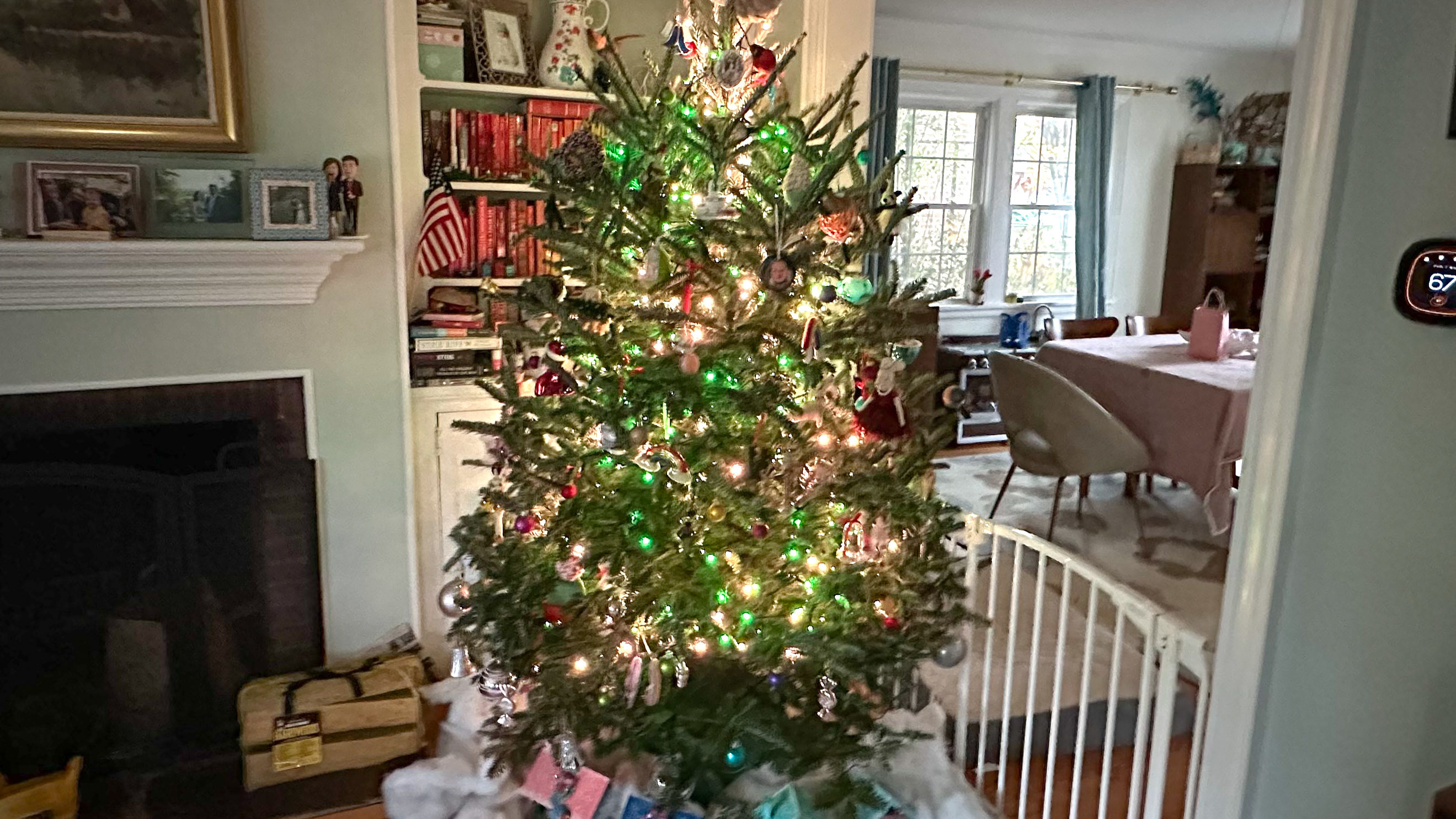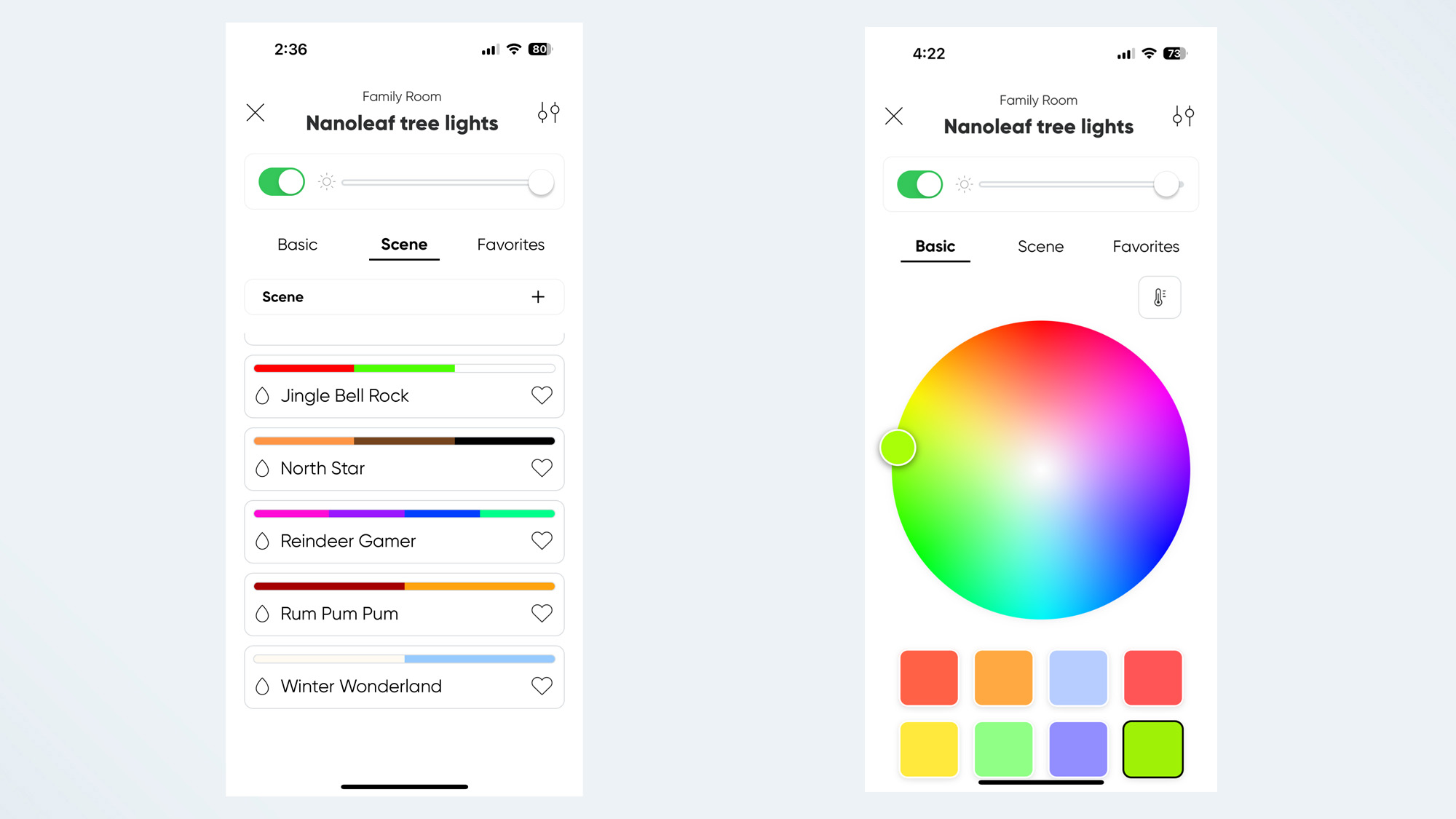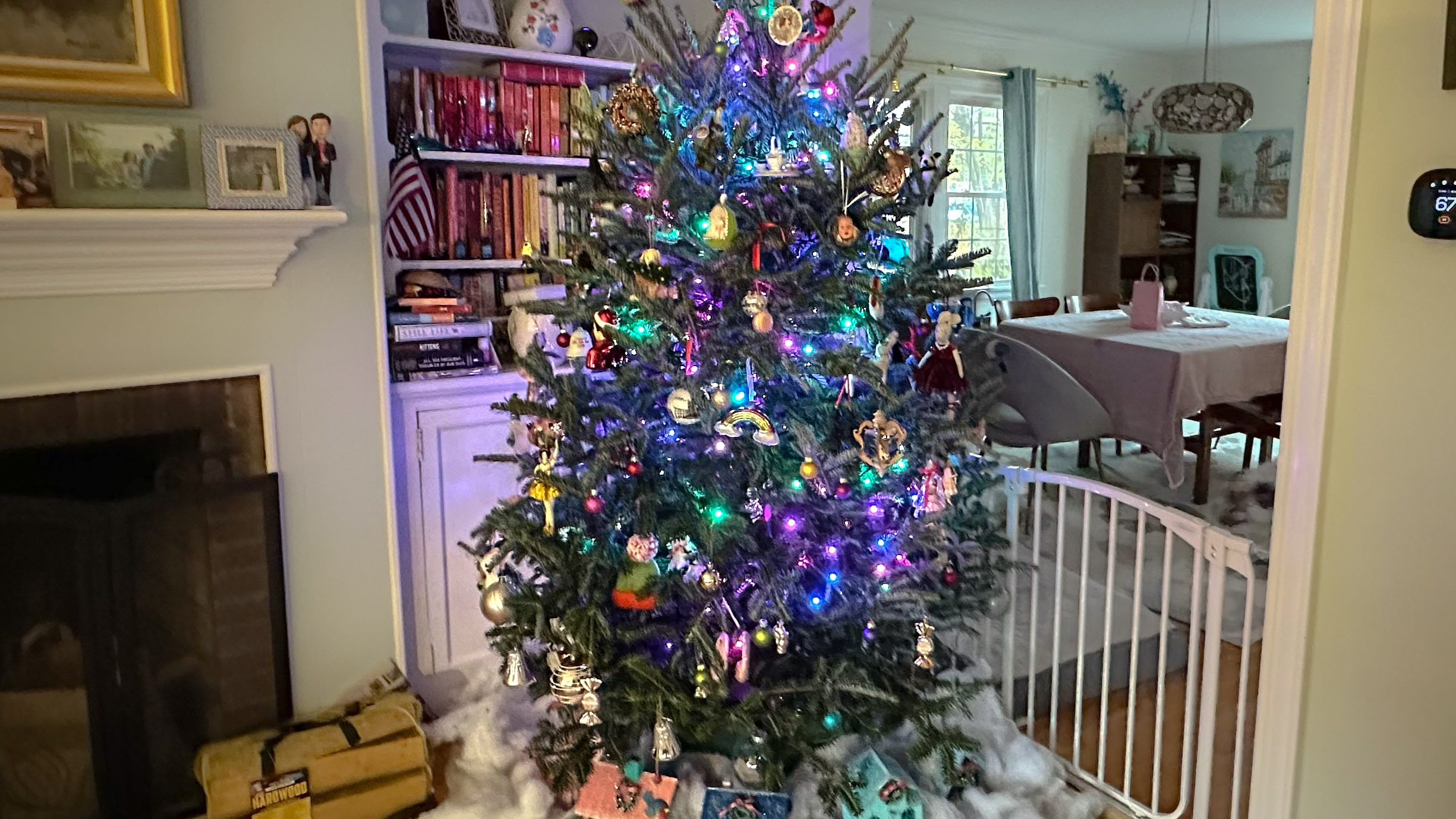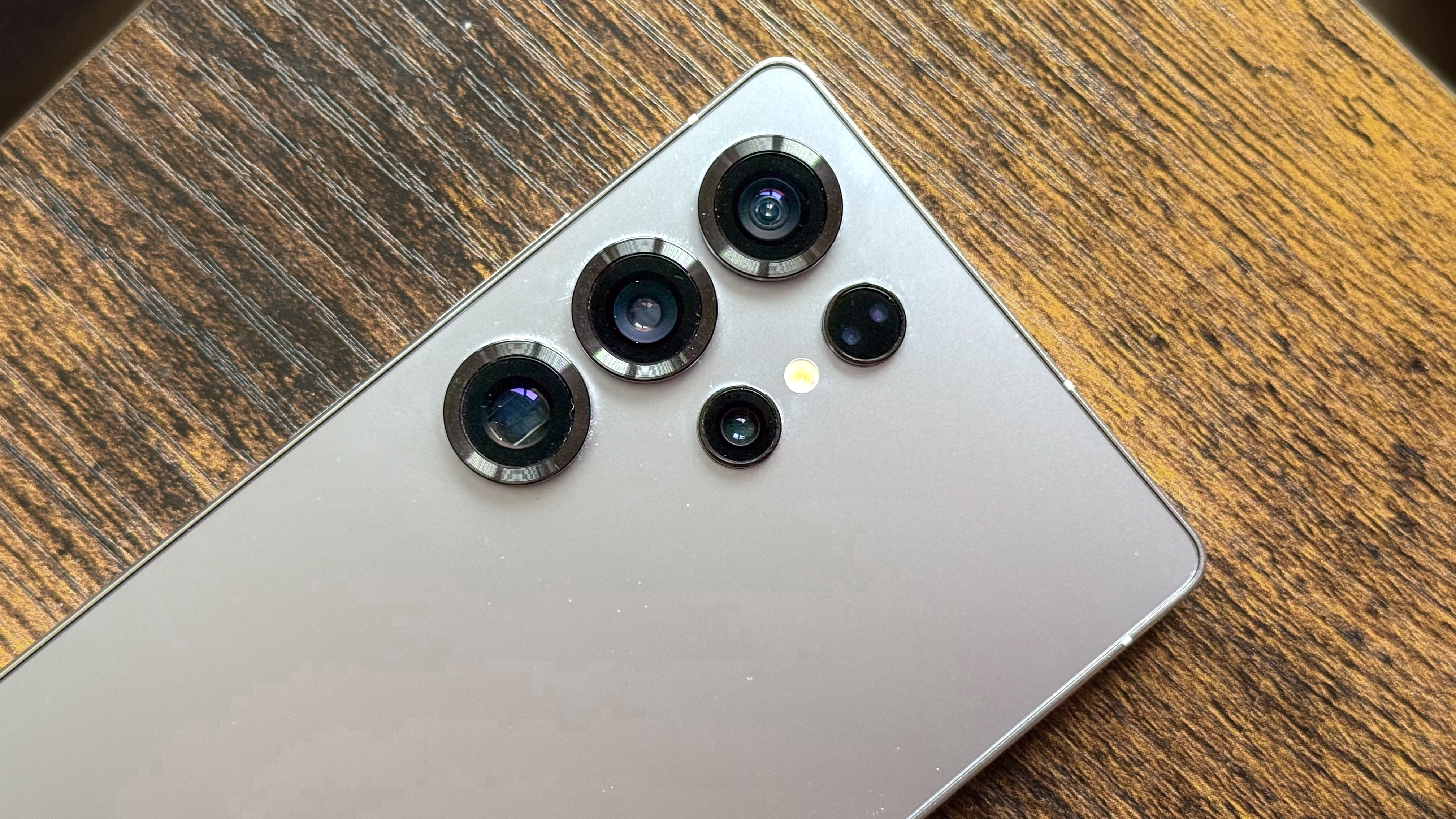Tom's Guide Verdict
While they're still not what we'd call cheap, the Nanoleaf Holiday String lights let you illuminate your Christmas tree in a world of colors and patterns, and do so for half the price of the Philips Hue Festavia lights.
Pros
- +
Simple to customize lighting patterns and colors
- +
Works with all major smart home systems
- +
Relatively easy to set up
Cons
- -
Lights are split into two strands
- -
More expensive than non-smart tree lights
Why you can trust Tom's Guide
Last year around this time, I reviewed the Philips Hue Festavia holiday string lights, and really liked them — these LED lights added a nice, colorful dimension to my Christmas tree. Not only could I set different colors at my whim, but I could also have the lights flicker as if they were candles, slowly change into a rainbow, and even react to music I was playing.
But the biggest issue I had was their price. At the time, the Festavia lights cost $165 for a 65-foot strand; this year, an updated version costs $219! In this economy! Sorry kids, it looks like we'll have an imaginary Christmas this year.
However, Nanoleaf has released its own holiday string lights starting at $119 ($99 on sale). While they're still not cheap, they cost half as much as the Philips Hue lights, and can do many of the same things. I tested out the Nanoleaf Matter Smart Holiday String Lights on my tree alongside the Philips Hue Festavia lights to see how the two compared.
Nanoleaf Matter Smart Holiday String Lights: Design

Price: from$99
Length: 20m (66 feet)
LEDs: 250
Wireless: Wi-Fi, Matter, Bluetooth
Smart home compatibility: Alexa, HomeKit, Google Home, SmartThings
IP rating: IP44
Nanoleaf's lights look pretty much like your typical set of string lights — a long wire with lights dotted along its length. Uniquely, Nanoleaf's lights are divided into two 10-meter (33-foot) strands, rather than having one single long strand, as is typical with most tree lights. I thought it was a bit odd, and made stringing the lights on my tree a touch more confusing than necessary.
Each strand comes bound with a strap, but after that, it's up to you to keep it from getting tangled. One thing I liked about the Philips Hue Festavia packaging is that the lights were wrapped around a cardboard spool, which makes things much tidier.
Nanoleaf's lights are connected to a small control box with a button that lets you manually turn the lights on and off and cycle through different patterns, so you don't have to take your phone out every time. It's a nice feature. Connected to this box is a power cord that plugs into an outlet.
The Nanoleaf Matter Smart Holiday String Lights have an IP44 rating, which means they're protected against splashing water. By comparison, the Philips Hue Festavia lights have an IP54 rating; in either case, I wouldn't leave them up all winter long, but they should be able to withstand a snowstorm or two.
The Nanoleaf lights connect directly to your Wi-Fi or Matter smart home hub (such as an Alexa smart speaker or HomePod); the Festavia lights can also be controlled via Bluetooth, but you'll need a Philips Hue hub (sold separately) to get the most out of the lights.
Nanoleaf Matter Smart Holiday String Lights: Performance and app
The Nanoleaf lights is one of the first smart home devices I've tested that was built with Matter from the ground up, which made it easy to connect to both Alexa and Apple HomeKit — though, I was a little confused when trying to link to both smart assistants at the same time.
The Nanoleaf lights is one of the first smart home devices I've tested that was built with Matter from the ground up, which made it easy to connect to both Alexa and Apple HomeKit
Once on my tree, the Nanoleaf lights were just as bright and colorful as the Philips Hue lights.
Nanoleaf's app appears a bit less polished than the Philips Hue app, but don't let its basic black-and-white look fool you: it lets you customize the lights far more than Philips does.
For instance, one of the things I like the best about the Philips Hue lights is that you can choose from six different effects (Candle, Fireplace, Sparkle, Glisten, Opal, and Prism) that will cause the lights to change color and flicker in different patterns. It's a neat effect. However, the Philips Hue app doesn't let you modify these effects or allow you to create your own.

Nanoleaf's app also has a number similar scenes, but by contrast, does let you edit them and create your own. In addition to picking your own color schemes (you can add up to seven colors per scheme), you can also pick from seven different patterns, such as Fade, Flow, Burst, and Organic. Within each of these options, you can customize how fast each pattern cycles through the colors.
If you don't want your lights to be constantly changing color, you can also pick static colors, and select up to eight different colors to show at any one time. Philips lets you pick up to five different colors, but also gives you the option of having them appear in a linear pattern, mirrored, or scattered.
Another neat function of both the Philips and Nanoleaf lights is that you can sync them to music. With the Philips lights, if you have a Spotify account, you can have your lights change color and pulse to whatever's playing. It's pretty awesome to watch your tree lights sync to the strains of A Charlie Brown Christmas.
Nanoleaf music integration is a bit more rudimentary. You first select a scene with music, and then the lights (via your phone) listen to anything that's playing in your room. Their reactions aren't quite as sophisticated, but it's still a fun effect.
Nanoleaf Matter Smart Holiday String Lights: Verdict
The holiday season is one of the best times of year to make the most of the best outdoor smart plugs and other outdoor smart lights like the Govee Permanent Outdoor Lighting Pro kit. Not only do they let you turn them on and off easily, but they can supercharge your display to enthrall your neighbors.
As I said, I really liked the Philips Hue Festavia string lights, but bemoaned their high price. The Nanoleaf Matter Smart Holiday String Lights are just as capable, at half the price. If you're looking to brighten your holidays — and be smart about it — these lights are definitely worth a look.

Michael A. Prospero is the U.S. Editor-in-Chief for Tom’s Guide. He oversees all evergreen content and oversees the Homes, Smart Home, and Fitness/Wearables categories for the site. In his spare time, he also tests out the latest drones, electric scooters, and smart home gadgets, such as video doorbells. Before his tenure at Tom's Guide, he was the Reviews Editor for Laptop Magazine, a reporter at Fast Company, the Times of Trenton, and, many eons back, an intern at George magazine. He received his undergraduate degree from Boston College, where he worked on the campus newspaper The Heights, and then attended the Columbia University school of Journalism. When he’s not testing out the latest running watch, electric scooter, or skiing or training for a marathon, he’s probably using the latest sous vide machine, smoker, or pizza oven, to the delight — or chagrin — of his family.
-
Sillybutter Honestly, Nanoleaf has been the worst smart lights I've ever owned. I don't own a single product from them that's ever just worked, and customer support is known to just ghost their customers. To anyone reading this, save yourself the headache and don't buy from this company.Reply

